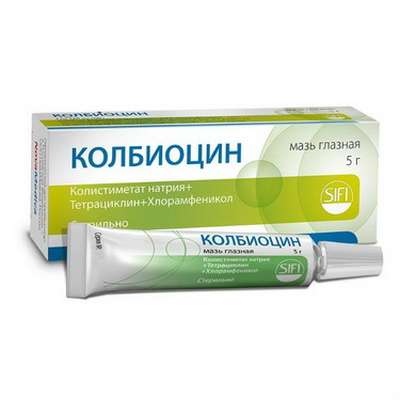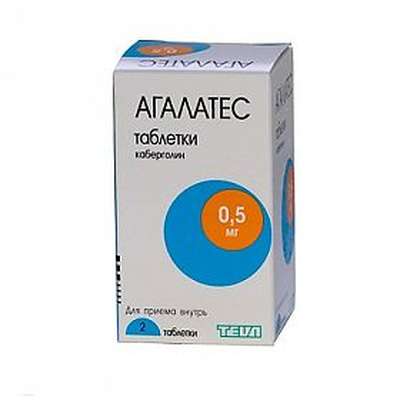Instruction for use: Pramipexole
I want this, give me price
The Latin name of the substance Pramipexole
Pramipexolum (genus. Pramipexoli)
Chemical name
(S) -2-Amino-4,5,6,7-tetrahydro-6- (propylamino) benzothiazole
Gross Formula
C10H17N3S
Pharmacological groups:
Dopaminomimetics
Anti-Parkinsonics
The nosological classification (ICD-10)
G20 Parkinson's disease: A trembling paralysis; Idiopathic Parkinsonism; Parkinson's disease; Symptomatic Parkinsonism
CAS Code
104632-26-0
Characteristics of substance Pramipexole
A white or almost white powdery substance. Melting it occurs in the range from 296 ° C to 301 ° C and is accompanied by decomposition. Solubility in water is more than 20%, in methanol - about 8%, in ethanol - about 0.5%, practically insoluble in dichloromethane.
Pharmacology
The pharmacological action is antiparkinsonian.
Nonergotamine agonist dopamine receptors. Highly selective stimulates dopamine receptors in the striatum, predominantly the D3 subtype of the D2 receptor family (with a slightly lower affinity for the D2 and D4 subtypes of the D2 receptor family). According to electrophysiological studies on animals, it activates dopamine receptors in the striatum and black substance, thus affecting the level of impulse in the neurons of the striatum.
Reduces the severity of motor disorders at any stage of the disease. Weaken the symptoms of the disease (bradykinesia, tremor, rigidity, etc.), reduces the severity of motor fluctuations and dyskinesias. Reduces the severity of depression and neuropsychological disorders, incl. Cognitive functions.
In the experimental studies, the neuroprotective effect was demonstrated (it stimulates the production of neurotrophic factors, etc.), thus contributing to a slowing down of the degeneration of dopaminergic neurons.
It is used for Parkinson's disease both in the form of monotherapy, and in combination with levodopa. The efficacy of pramipexole has been demonstrated in randomized controlled trials, both in patients with early Parkinson's disease who did not receive simultaneous treatment with levodopa preparations, or in patients with advanced stage of the disease while using levodopa preparations. The use of pramipexole in combination therapy can reduce the dose of levodopa (in a number of studies - by almost a third) with an improvement in II ("Daily Activity") and III ("Motor Functions") parts of the UPDRS scale (unified BP scales) and a decrease in the duration of the "period Off ".
The effectiveness of pramipexole in the treatment of restless legs syndrome is shown.
Quickly and completely absorbed from the digestive tract. Cmax is reached after about 2 hours. Food intake increases the time to reach Cmax by 1 hour, but does not affect the completeness of absorption. Absolute bioavailability is more than 90%, volume of distribution is about 500 liters, binding to plasma proteins is 15%. It accumulates in erythrocytes (the ratio of the concentration in erythrocytes to the concentration in the plasma is 2). The equilibrium concentration in the blood is reached within 2 days after the beginning of the admission. T1 / 2 in young healthy volunteers - 8 hours, in elderly volunteers - 12 hours Excreted mainly by the kidneys (secreted by the renal tubules, possibly through the system of organic cation transport) - 90% of the administered dose, almost completely unchanged. Kidney clearance is about 400 ml / min. Clearance in women is 30% lower than in men (which may be due to a difference in body weight). In patients with Parkinson's disease, clearance may be reduced by 30% compared with healthy elderly volunteers. In elderly people (65 years and older), clearance is 30% lower, and T1 / 2 is increased by 40% compared to T1 / 2 in young healthy volunteers (age less than 40 years). With moderate impairment of renal function (Cl creatinine 40 ml / min), clearance decreases by 60% compared with healthy subjects, with severe impairment (Cl creatinine 20 ml / min) - by 75%. Clearance is extremely low in patients on hemodialysis.
In 2-year studies on animals (mice and rats) there was no evidence of a carcinogenic effect. It did not show a mutagenic effect in in vitro and in vivo tests.
In the study of fertility in rats treated with pramipexole 2.5 mg / kg / day (5.4 times higher than the therapeutic dose in mg / m2 for humans), the animals experienced an increase in the duration of estrus and inhibition of implantation. These effects were associated with a decrease in serum levels of prolactin (necessary for implantation and preservation of early pregnancy in rats).
In pregnant rats who received pramipexole at a dose of 2.5 mg / kg / day (5.4 times higher than the therapeutic dose in mg / m2 for humans), inhibition of implantation was observed. Introduction to pregnant rats at a dose of 1.5 mg / kg / day during organogenesis (from 7 to 16 days of pregnancy) was accompanied by a high frequency of complete resorption of the embryo. These changes were associated with a decrease in serum levels of prolactin required for implantation and early pregnancy in rats (but not in rabbits and humans). Since these studies observed termination of pregnancy and early loss of the embryo, the potential teratogenicity was not adequately assessed. In the offspring of rats treated with pramipexole 0.5 mg / kg / day (approximately equivalent to the maximum therapeutic dose in mg / m2 for humans) or higher during the last part of the pregnancy and throughout lactation, postnatal growth was delayed. Pregnant rabbits, receiving doses up to 10 mg / kg / day during organogenesis, did not have a negative effect on embryo-fetal development.
When administered radiolabeled single dose lactating rats in their milk radioactivity was determined, and its level was 3-6 times higher than in milk than in plasma at the same time intervals.
A number of studies have shown that pramipexole inhibits the secretion of prolactin in humans and rats.
Application of substance Pramipexole
Parkinson's disease.
Contraindications
Hypersensitivity.
Restrictions on the use
Renal failure, arterial hypertension, marked cognitive impairment, pregnancy, breast-feeding.
Application in pregnancy and lactation
Perhaps, if the expected effect of therapy exceeds the potential risk for the fetus (adequate and well-controlled studies on use during pregnancy have not been conducted).
The action category for fetus by FDA is C.
For the duration of treatment, breastfeeding should be discontinued (there is no data on penetration into human milk).
Side effects of Pramipexole
From the nervous system and sensory organs: fatigue, drowsiness / insomnia, hallucinations, delirium, amnesia, confusion, dizziness, anxiety, depression, dysphagia, dystonia, akathisia, thought disorders, suicidal tendencies, extrapyramidal syndrome, dyskinesia, tremor, gipostezii, hypokinesia, myoclonus, ataxia, impaired motor coordination, double vision, paralysis of accommodation, conjunctivitis, impaired hearing; in a few cases (with the rapid reduction of the dose or abrupt withdrawal) - neuroleptic malignant syndrome (hyperthermia, muscle rigidity, disturbance of consciousness, autonomic lability).
From the cardiovascular system and blood (hematopoiesis, hemostasis): orthostatic hypotension, tachycardia, arrhythmia.
On the part of the respiratory system: dyspnea, rhinitis, pharyngitis, sinusitis, flu-like syndrome, coughing.
On the part of the intestine: nausea, vomiting, indigestion, flatulence, diarrhea, dry mouth, anorexia, constipation.
On the part of the musculoskeletal system: muscle hypertonicity, cramps in the leg muscles, muscle twitching, myasthenia gravis, arthritis, bursitis.
Other: fever; Peripheral edema, sweating, increased intraocular pressure, decreased libido, impotence, weight loss; Increased frequency of urination, urinary tract infections; Pain syndrome, incl. Pain in the chest, abdominal pain, pain in the lumbosacral spine, pain in the neck; Change of voice; Increased activity of CK; Allergic reactions.
Interaction
Pramipexole increases Cmax levodopa by 40% and reduces Tmax from 2.5 to 0.5 hours. Cimetidine increases the AUC of pramipexole (by 50%) and T1 / 2 (by 40%). With simultaneous administration of drugs that are secreted by the cationic transport system of the kidneys (including ranitidine, diltiazem, triamterene, verapamil, quinidine and quinine), the clearance of pramipexole is reduced by approximately 20%. Dopamine antagonists, incl. Neuroleptics (phenothiazines, butyrophenones, thioxanthenes) and metoclopramide, may decrease efficacy.
Update of information
Interaction with anticonvulsants
In a study in healthy volunteers (n = 10), it was shown that levodopa / carbidopa does not affect the pharmacokinetics of pramipexole. Pramipexole did not change the amount of absorption (AUC) or elimination of levodopa / carbidopa, although it caused an increase in Cmax of approximately 40% and a decrease in Tmax of levodopa from 2.5 to 0.5 h.
Selegiline and levodopa do not affect the pharmacokinetics of pramipexole.
The interaction of pramipexole with amantadine has not been studied. However, interaction with amantadine is possible, because These drugs have a similar elimination mechanism.
Overdose
Treatment: gastric lavage, maintenance therapy - intravenous fluids, ECG monitoring; When there are signs of CNS excitation, neuroleptics (phenothiazines, butyrophenones) can be shown. The specific antidote is unknown.
Routes of administration
Inside.
Precautions for the substance Pramipexole
Patients should be warned about the risk of hallucinations (especially elderly patients), the possibility of developing orthostatic hypotension (at the beginning of treatment or with increasing doses). Caution is prescribed in patients with a history of renal insufficiency. It is recommended to cancel pramipexole gradually (within 1 week).
Do not use during work drivers of vehicles and people whose profession is associated with increased concentration of attention.

 Cart
Cart





